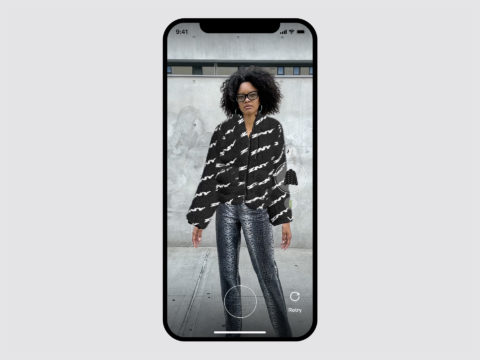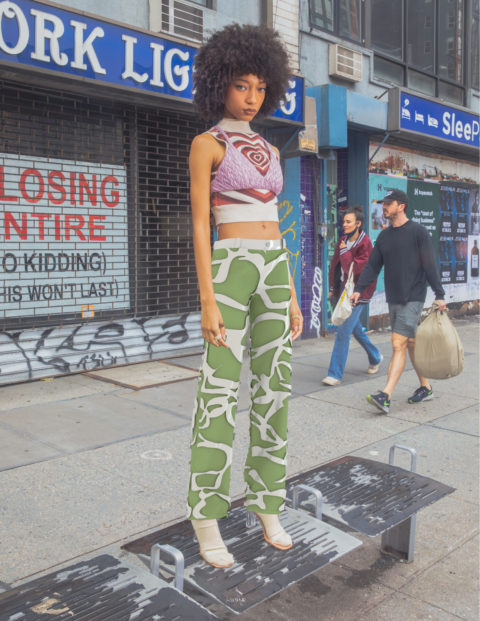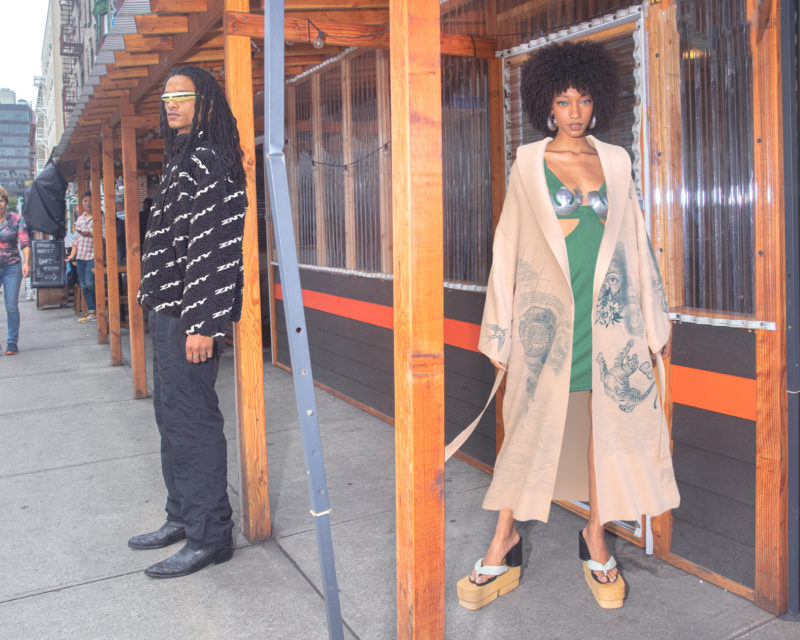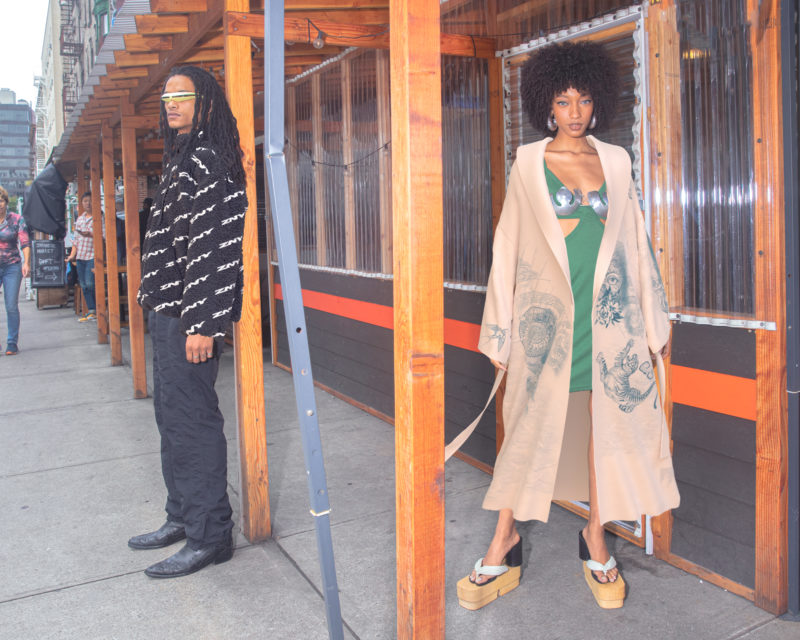Photography courtesy of Zero10
This may be one small step towards solving overconsumption.
Date October 21, 2021
In the age of fast fashion, TikTok shopping hauls and #OOTDs, we’ve come to associate style with an (overly) well-stocked wardrobe. Unspoken social media rules tell us that once an outfit is posted to one or all of our many feeds, we are never to be seen in it again. This culture inevitably plays into a hot-button issue in the fashion industry: the overproduction and overconsumption of clothes, one small solution for which may come via digital fashion. Zero10, a tech startup brand, is creating digital clothing, and its efforts may address one piece of the waste puzzle by changing the way we think about clothes, instead of asking us to wear less. Launching on October 21, Zero10 is an iOS application that uses augmented reality (AR) technology to simulate garments from various brands onto users’ bodies. Made from pixels instead of textiles, digital clothing is giving the fashion industry a small but desperately-needed push towards sustainability.
“The most important motivation was the desire to solve those industry problems that have existed for a very long time,” Zero10 CEO and co-founder George Yashin tells FASHION. “The complexity of production and manual labor; overproduction — since consumers want to buy more, cheaper and more often.”
 Photography courtesy of Zero10
Photography courtesy of Zero10
In line with fashion’s continued merging of the digital and physical worlds, Zero10 allows users to try on clothing in real time via phone cameras, and post their digital ‘fits to social media. Using cloth-simulation technology, the app replicates the natural flow of fabrics to create a life-like effect.
“We are already working on the features that will allow users use it not only for AR fitting and content creation, but also, for example, in games, to create their own customized items, to look at the new collections or even resell digital items,” Yashin says.
Along with encouraging users to try on garments virtually (à la Cher in Clueless), the app has a wardrobe feature where users can purchase and store their favourite looks. All of this can then be used to create social media content.
 Photography courtesy of Zero10
Photography courtesy of Zero10
Zero10 will be collaborating with fashion brands, emerging independent designers and artists on new drops, which will be revealed within the app. Collections are released every two weeks, as reported in WWD, and items are usually priced at around US$1 to US$20. For the launch, Zero10 told WWD it will be offering 12 unisex digital items for free from brands including Ksenia Schnaider, ZNY, AV Vattev, Florentina Leitner and Ttswtrs.
For those who are always searching to produce fresh fashion content, digital clothing is an eco-friendly option. The dressing method involves no textile waste, so users can buy a trendy item and wear it once without contributing to landfill disposal. Plus, it’s more affordable than physical clothing, and makes attaining luxury items more accessible. With items capped at US$20, Zero10 is producing high-end pieces at fast fashion prices, without the environmental waste. It also breaks down traditional barriers of size exclusivity in luxury fashion, as digital clothing can fit any body size.
 Photography courtesy of Zero10
Photography courtesy of Zero10
While digital fashion has been around for years — most commonly used in video games like Sims or the early aughts online game Stardoll, which involved dressing and buying virtual clothes for digital avatars — there seems to be a growing market for digital fashion in the physical world. Take NFTs, a digital method of artistic expression that has been increasingly embraced by notable figures in the industry. By creating a medium where physical bodies and virtual style can meet, digital clothing may be the future of fashion content.
“Cyber fashion is a logical extension to the current fashion industry,” Yashin says. “Digital clothing will never become bigger and more powerful than physical clothing as they simply don’t have any practical use. However, it can open up completely new opportunities for interacting with brands [and] reduce physical consumption while delivering almost the same emotional feelings of shopping and keep people involved in the fashion game. We feel like the industry and the consumers [are] finally ready for this.”

































